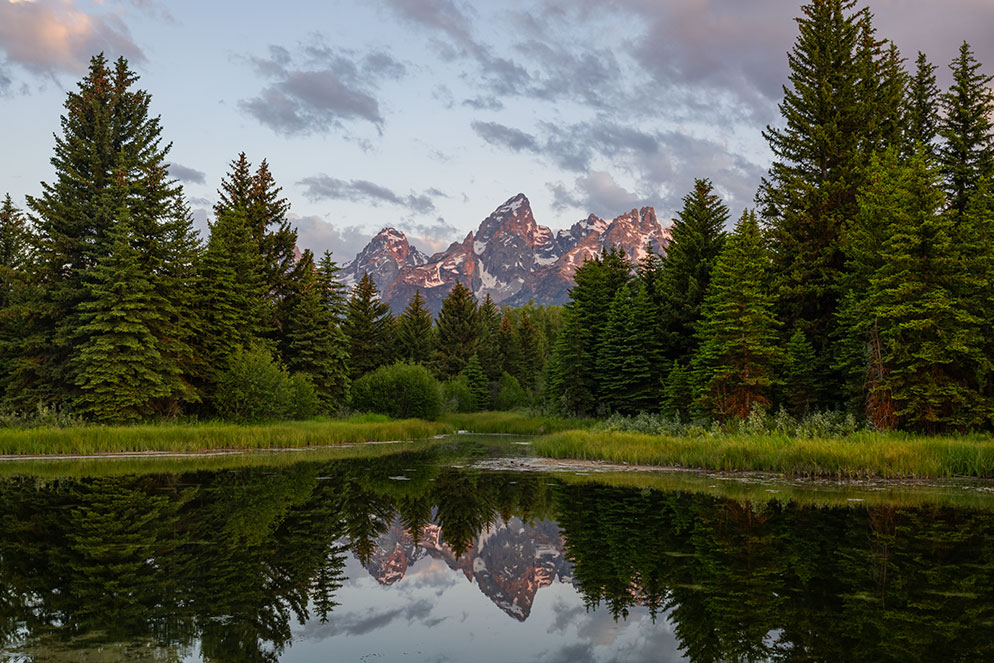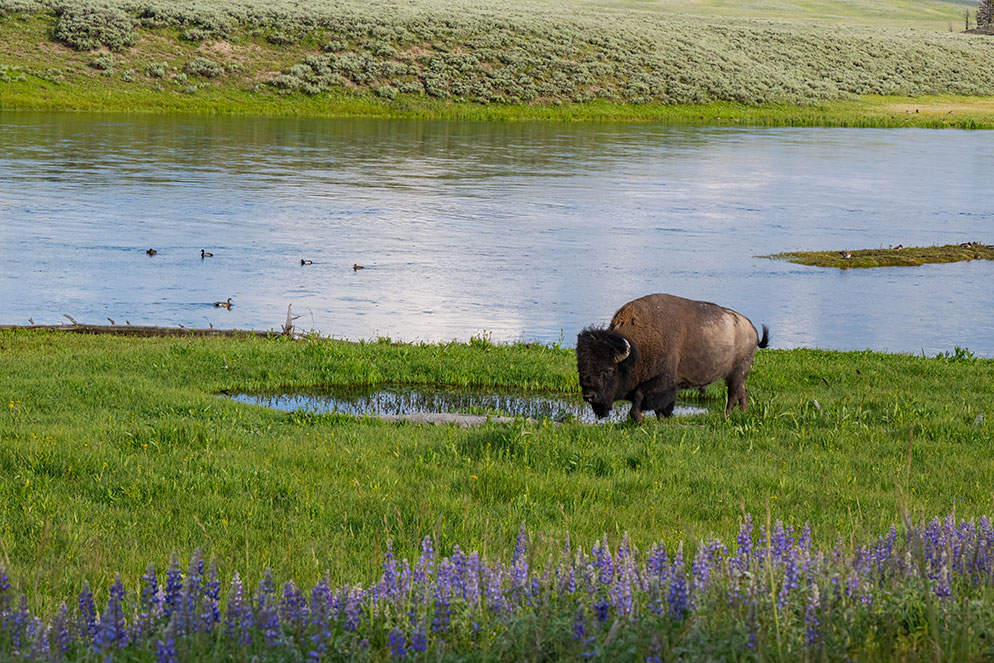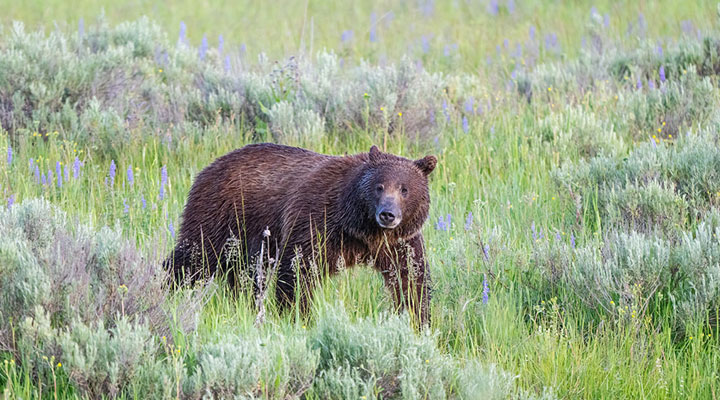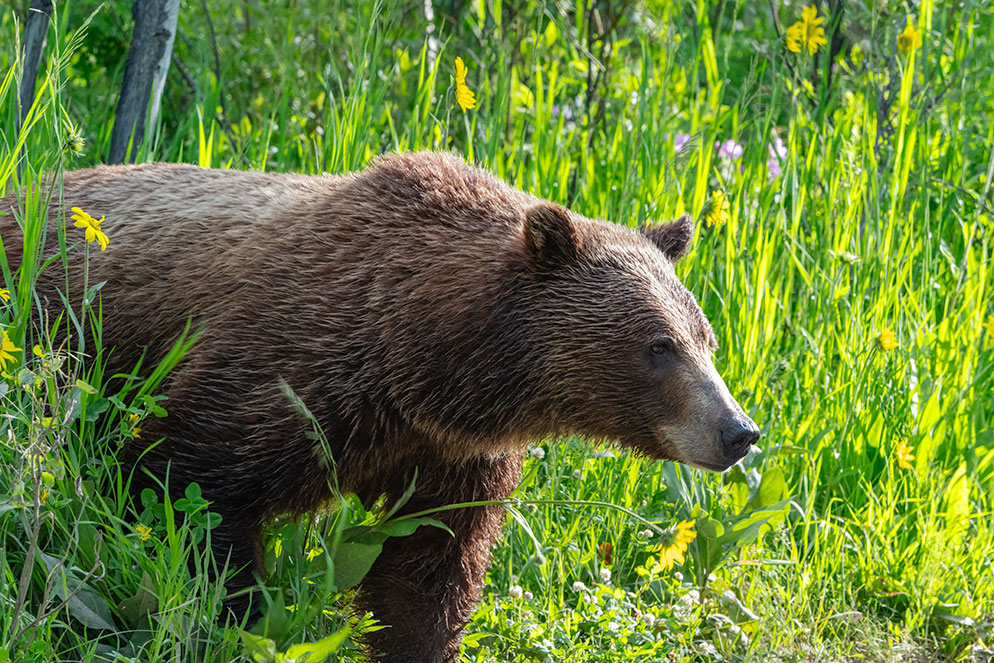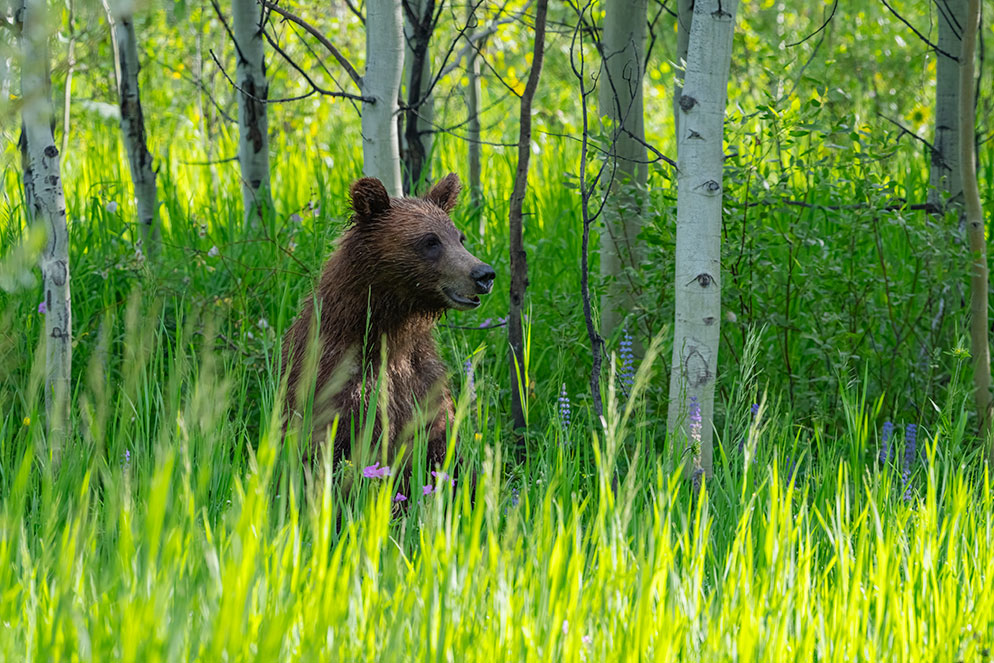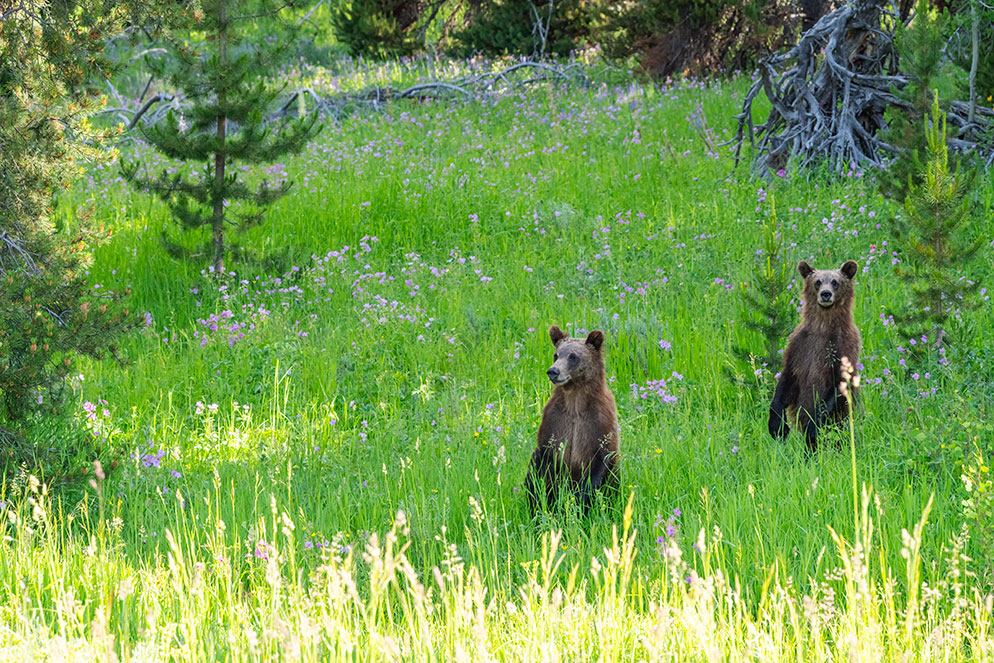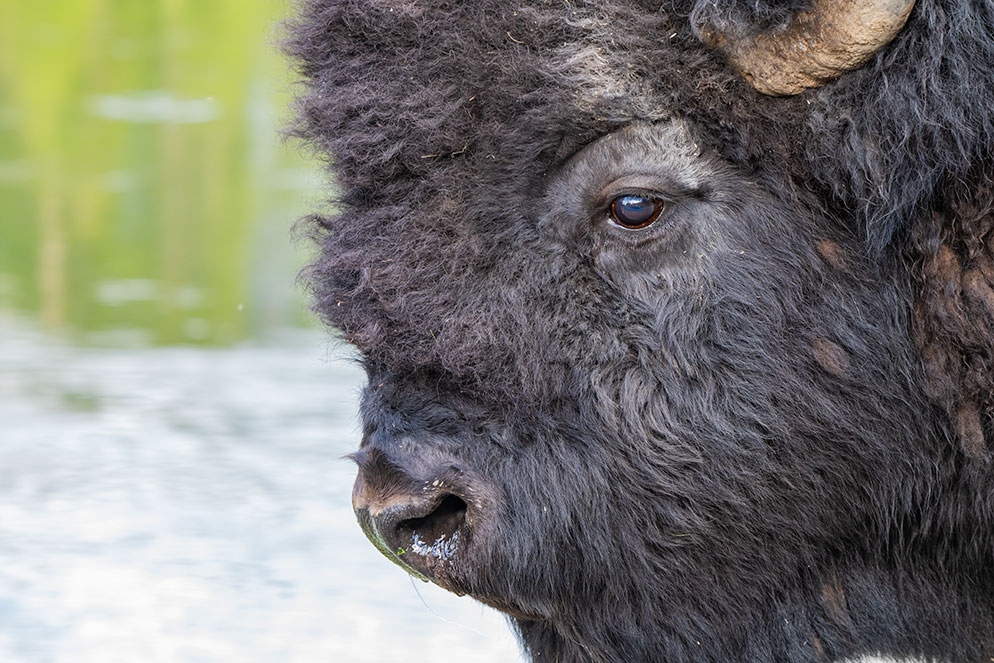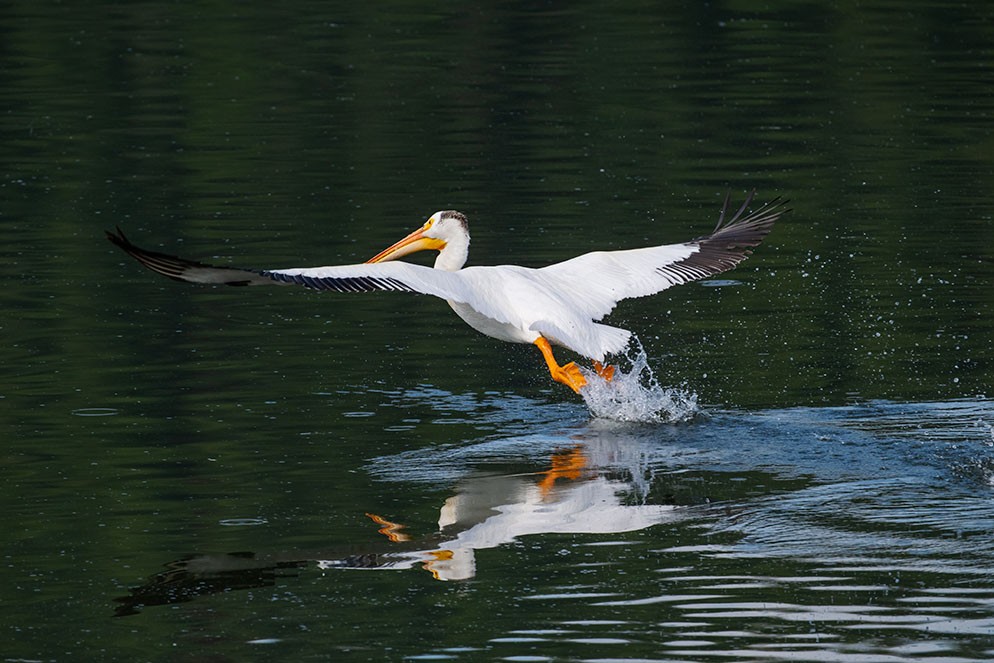Serious About Your Wildlife Photography? Then It’s Time to Take a Closer Look
Bull bison along the Yellowstone River in Hayden Valley. Thomas D. Mangelsen composed to include the lupins to balance the bison’s bulk with a touch of color and fragility. “I thought the flowers were definitely needed, and the line of ducks,” he says. “Whenever you can get more than one species in the frame, that’s advantageous.” Z 8, NIKKOR Z 24-70mm f/2.8 S, 1/640 second, f/13, ISO 1000, aperture-priority exposure.
If you need an introduction to legendary wildlife photographer Thomas D. Mangelsen, we’ve got the perfect one for you. The fact that it’s also an introduction to our extraordinary NIKKOR Z 180-600mm f/5.6-6.3 VR lens is purely a coincidence.
We were talking with Tom about the 180-600mm, and he said one reason he liked it so much was that because of its focal length coverage, “You often don’t have to change position.” Then he added, “But that’s no knock on composing with your feet.”
Tom’s balanced consideration of technology and human-element, common-sense basics is pretty much what he’s all about: quick to take advantage of the possibilities, opportunities and options that technical change offers, but not about to forget all those things that don’t change—things like long hours, patience, purpose, dedication, ideals…and footwork.
Schwabacher Landing, with the central peaks of the Grand Tetons in the background. The area is known for its scenic views and high concentration of wildlife and photographers. Z 8, NIKKOR Z 24-70mm f/2.8 S, 1/40 second, f/11, ISO 500, aperture-priority metering.
The Long Ranger
For Tom, the biggest benefits of the 180-600mm is the variable focal length reach and the incredible sharpness. “That, and with the high ISO capability of the Z cameras, you don’t have to carry a lens like the first 600mm I carried many years ago,” he says. “I think it weighed nearly 15 pounds, or close to that, and except in real emergencies, you wouldn’t try to shoot it hand held.”
The range of the 180-600mm is particularly significant for him because it allows him to place animals within their environments to convey the importance and the beauty of the habitats. “The future of wildlife is linked to habitat, and to showing that they belong to these places. That fact resonates with people.”
“This is Grizzly 610, the oldest living female offspring of bear 399. She has two yearling cubs of her own that were following her.” Z 8, NIKKOR Z 180-600mm f/5.6-6.3 VR, 1/2000 second, f/6.3, ISO 3200, program exposure.
A closer shot of 610. Tom could identify her two ways: yellow ear tags, not visible in this photo, and “if it’s a bear with two yearlings, it’s most likely her. If she were by herself, at a distance, that’s a lot more sketchy an identification.” Z 8, NIKKOR Z 180-600mm f/5.6-6.3 VR, 1/250 second, f/13. ISO 1600, aperture-priority exposure.
And with the Z Teleconverter TC-1.4x on the 180-600mm, he can extend his reach to 840mm. “With the lens at 840mm you can do a portrait of the animal,” he says, “and then, with a small turn of your wrist, go to 180mm for that animal in the landscape, all without changing your position. Overall, it’s a great lens—internal focus, light weight, great range and on the Z 8, very hand-holdable.”
Though the Z 9 is Tom’s go-to camera, he used a Z 8 for the images you see here, and for a few months of shooting in Africa. “Great camera—light weight, compact, completely user-friendly. The image quality was superb, and the Eye AF was great—even from blinds, with leopards moving through tall grass, it held focus.”
One of 610’s cubs, in a photo Tom says is representative of the Z 8’s ability to handle extreme differences in light. “The cub is in deep shadow, with brighter light front and back. The Z’s capture of detail in the mixed light is pretty amazing.” Z 8, NIKKOR Z 180-600mm f/5.6-6.3 VR, 1/400 second, f/13, ISO 1600, aperture-priority exposure.
“I took this shot of 610’s cubs and the three previous images in less than a minute, shooting out the window of the car,” Tom says. “The bears were either on the move or, in the case of the cubs, only briefly sitting, and you can see the effect and benefit of the 100-300mm’s focal length range.” Z 8, NIKKOR Z 180-600mm f/5.6-6.3 VR, 1/320 second, f/13, ISO 1600, aperture-priority exposure.
With the 180-600mm, you can do a portrait of the animal, then with a small turn of your wrist, go to that animal in the landscape, all without changing your position.
Elk cows in Willow Flats in Teton Park among lupin, grasses and some yellow wildflowers. “One elk has its tongue out, and there’s a cow bird on its rump. The elk disturb the grass and flush out insects, and the birds know to follow them.” Z 8, NIKKOR Z 180-600mm f/5.6-6.3 VR, 1/100 second, f/13, ISO 1000, aperture-priority exposure.
The Long Run
Tom’s career spans film to mirrorless, from the days of struggling to manually focus on an eagle in flight to the speed and accuracy of Z camera AF and complete confidence in the quality of the images. “People who see my 40-by-60-inch or even larger gallery photos and say they can tell which are film and which are digital are 50 percent of the time wrong.”
A bull bison close-up taken in Hayden Valley. Tom chose a shallow depth of field to soften the background Yellowstone River. “I didn’t want it to be distracting—I wanted you to see the eye and the sharpness of the hair.” Z 8, NIKKOR Z 180-600mm f/5.6-6.3 VR, 1/100 second, f/8, !SO 1250, aperture-priority exposure.
He’s welcomed the technical advances, all the while holding fast to the purpose that drives and continuous to inspire him. As we pointed out when we wrote about Tom’s photography several years ago, he’s not about animals looking cute, not about pretty pictures. “A lot of young photographers just getting into wildlife photography don't quite make the link that they have a responsibility to protect what's out there,” Tom told us then. “We have the ability to make images that will teach people about endangered species and places needing protection, pictures that can even change minds, and we have a responsibility to do it.”
He’s carried that responsibility all the way and feels that today the message is more important than ever. “We have the means of communication and the tools for the most dramatic, powerful presentations, but do we have the will to use those means and tools? Can we convince? I think it’s more critical now for photographers, artists and writers, for everyone, to really stand up for nature, wildlife and wild places.”
“This is at Oxbow Bend on the Snake River in Teton Park. The pelicans fly over, circle and dip in to get the fish.” To get a black background and be sure the exposure on the pelican wasn’t blown out, Tom set a -2/3 exposure compensation. Z 8, NIKKOR Z 800mm f/6.3 VR S, Z Teleconverter TC-1.4x, 1/1600 second, f/11, ISO 1250, aperture-priority exposure.
The Long-Term Project
For over 17 years Tom’s been documenting a family of bears living in Grand Teton National Park and Bridger-Teton National Forest. They are the progeny of a 28-yea-old mama bear known as Grizzly 399. Tom’s book about her, Grizzly 399: The World’s Most Famous Mother Bear, was published in 2023, and a documentary film about her, and Tom’s relationship to her, 399: Queen of the Tetons, debuted in February, 2024.
“We call it ‘bear season’ when she comes out of the den, which is usually in April or May, and when she’s around, which is usually until late June, when it’s so hot she pretty much disappears into the high country,” Tom says. “She’s back down in the valley August through December.”
During those months Tom is usually out photographing every day, and he estimates that over the years those days total 150 or more. “But now she’s become more reclusive, less and less visible, and kind of towards her likely end of life, so I haven’t been out as much.” At least not on the 399 project, but he’s certainly been on the move photographing, most recently, in Botswana, Kenya, France and Ethiopia. No matter what he’s photographing, his goal is one of those things that hasn’t changed: to create images that inform, reveal and “stand up for nature, wildlife and wild places.”
The advocate: Take a three-minute journey with Tom Mangelsen as he captures images that speak up for animals, and the need to respect and protect them.

